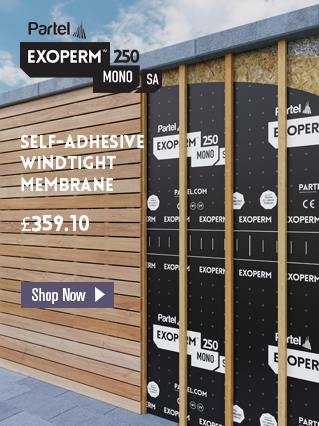Airtight Membranes & SD values Often referred to as airtight membranes know but should be classified as -
- Vapour Checks
- Vapour Barriers
Before we discuss the differences in 1 & 2 we need to discuss Vapour resistance, SD values and μ values.
Vapour resistance The vapour resistance of a material is a measure of the material’s reluctance to let water vapour pass through. The μ (“mu-value”) of a material is also known as its “water vapour resistance factor”. It is a measure of the material’s relative reluctance to let water vapour pass through, and is measured in comparison to the properties of air. The μ value is a property of the bulk material and needs to be multiplied by the material’s thickness when used in a particular construction.
Because the μ value is a relative quantity, it is just expressed as a number (it has no units) Equivalent air layer thickness (sd value)
You might see the reluctance of a material to let water vapour pass through expressed as an “equivalent air layer thickness”, which is usually represented as sd. As its name suggests, the equivalent air layer thickness is measured in metres. Like vapour resistance, it can only be quoted for a particular thickness of material.
The higher the SD Value the more resistant to vapour transmittance.
To convert an equivalent air layer thickness to a µ-value -sd is the symbol for equivalent air layer thickness Divide by thickness in metres Example: For a material with : sd = 2,000m and thickness = 100 mm, we have µ-value =2000 m / 0.1 m = 20000 3 Rules for the correct Installation of Vapour Barriers and Vapour Checks 1. Working ventilation or vapour permeable layer. low SD value.

2. No Ventilation between insulation and vapour retardant outer skin. Vapour barrier with high SD value

3. Locations with constant relative humidity such as swimming pools. Vapour barrier high SD value

Incorrect installation will lead to construction damage!









